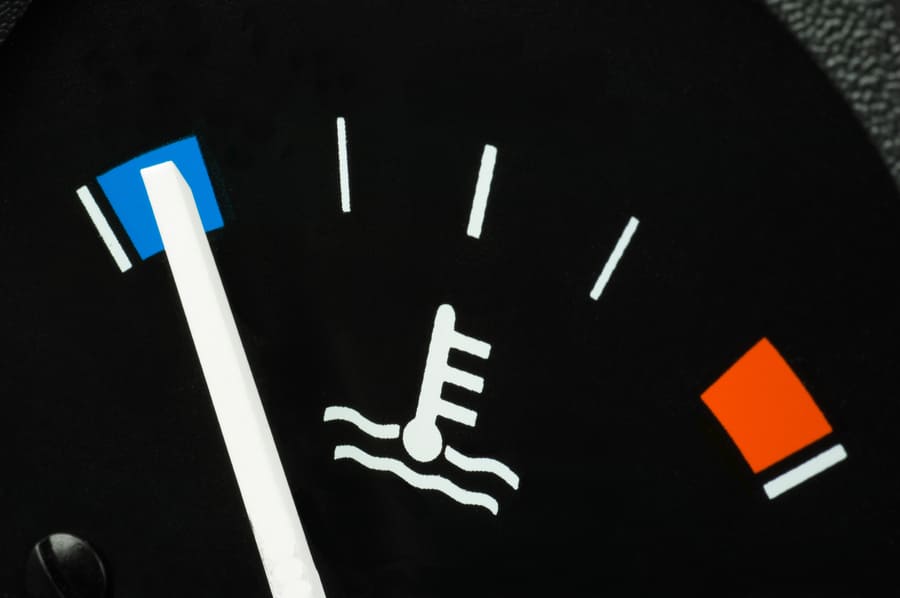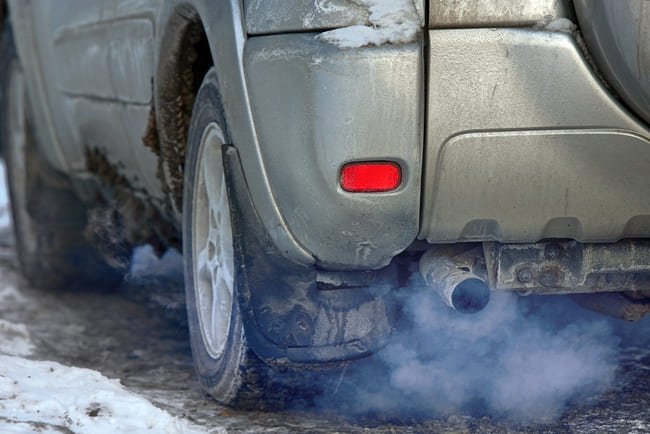
Each of us has done it before, especially when it’s cold: we get into the cold car, start the engine and let it warm up first. Depending on the cold and patience, many drivers let the engine run for a few minutes before they even start driving. First of all, this already warms up the interior of the vehicle, the seat heating and the auxiliary heating can then slowly get going and make it comfortably warm in the car, but vehicle owners primarily decide to warm up the engine to bring it up to operating temperature. This – that’s what it says – is intended to protect the engine and its units. But is there really anything to this fact? And is it even legal to let the engine run without moving from the spot? In the following, we want to deal with these questions in more detail and give some tips on other ways in which the engine can be protected particularly well.
Contents
Is warming up really good for the engine?

One of the main reasons why drivers decide to let the engine warm up in the cold winter months and also in the warmer months is to protect the engine. Rumor has it that the engine will benefit if it is first warmed up to operating temperature before the journey begins. But is there really something to it? According to studies, mechanics have been able to prove that warming up like this is only useful if the engine runs for around 20 minutes before it starts. Because the oil in the engine compartment only develops its ideal lubricity after 20 minutes. However, actually letting the engine run for 20 minutes in practice would be anything but fair to the environment. That is why it is also forbidden in The United Kingdom and will be punished with a fine if a car is left running unnecessarily. We will go into this in more detail below.
Is this method actually banned in The United Kingdom?

Yes, that’s her. Because you as a driver should always make sure that unnecessary pollutant emissions are avoided. The traffic law says the following:
“When using vehicles, unnecessary noise and avoidable exhaust emissions are prohibited. In particular, it is forbidden to run vehicle engines unnecessarily and to close vehicle doors with excessive noise. Useless driving back and forth is prohibited within built-up areas if this causes annoyance to others.” That’s what it says in paragraph 30 of the StVo. If this regulation is violated, a fine of up to 10 euros must be expected.
Because if all Germans only let their cars run for a few minutes before starting the journey, you can imagine the total amount of pollutants that would blow into the atmosphere every day. Therefore, it is actually forbidden by law to do so. You should also know that the engine of your car will not easily reach the necessary operating temperature that you want to have in the low speed range. The engine does not have to be switched off at a red light, but if you want to scrape ice off the windows or stand in a parking space waiting for someone, yes. In every possible situation, the emission of pollutants into the air by vehicles should be reduced or avoided altogether. You should always remember that a combustion engine is there to allow mobility and not to generate heat. In special situations, a fine of up to 50,000 euros was even imposed for warming up a vehicle. So you really shouldn’t be joking with it. Alternatively, you can have a parking heater retrofitted in your car. So you’ll have it nice and warm in your vehicle every morning. If you want to avoid icy windows, a cold foil would be the ideal solution for you. This is simply placed on the windshield to prevent the glass from icing up. And if the only reason you’re running the engine is to get the engine oil up to the ideal temperature, remember: this takes around 20 minutes. It is better for you to drive off straight away and drive the car gently for the first few minutes, shift gears with foresight and avoid high speeds. This will help you and your car more.
Short-distance trips – what is it all about?
Short journeys should be avoided at all costs. You can do your car a lot better and protect the engine and its units if you avoid getting in the car for a few minutes and a few kilometers. This is a no-go, especially for diesel vehicles. So instead of leaving the engine running late in the morning, you should choose to get on your bike for short distances. Your car – and on top of that also the environment – much more helped. In general, car journeys can be reduced to a few kilometers if you take care to plan your everyday life with more foresight. For example, you can combine a visit to the doctor with shopping at the supermarket. Or stop at the gas station after visiting a friend. This avoids individual journeys and if many millions of drivers followed this example, exhaust emissions would also be reduced considerably as a result.
The conclusion and a tip from AutoDoc
In summary, it can be said that unfortunately many motorists believe the madness that warming up a car is only good for the engine. It is said that the engine oil should be warmed up to the ideal operating temperature before starting the journey.
But this is a mistake. Although the lubricity of engine oil is best when it is warm, the engine would have to run for around 20 minutes before this temperature was reached. In The United Kingdom it is therefore forbidden and even punished with a fine. Alternatively, drivers can drive particularly carefully for the first few kilometers, which means that high engine speeds should be avoided, as should rapid acceleration, i.e. overtaking maneuvers or high speeds. This should only be used once you have already driven a few kilometers. This is a much better way of protecting your car. If de-icing your windshield is wasting a lot of your valuable time in winter, AutoDoc recommends buying a cold foil. This prevents the panes from freezing in sub-zero temperatures. You can buy such films at almost every gas station or workshop, and they are also quite cheap.
